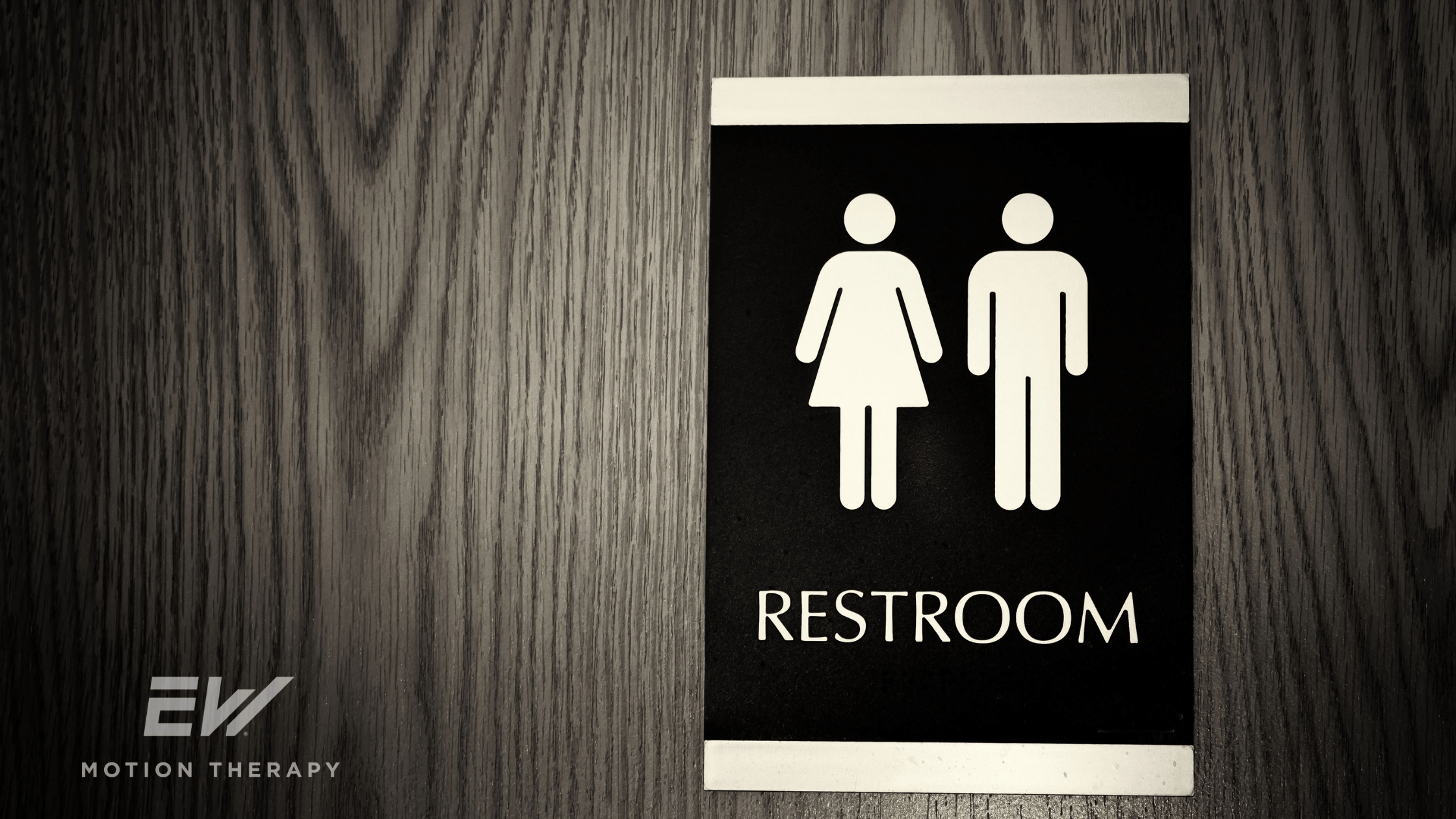Physical Therapist, PT, DPT, MTC // EW Pilates Instructor // EW CoreAlign Instructor // Certified in Dry Needling // EW Motion Therapy Homewood
Overactive bladder (OAB) is a condition that affects millions of people worldwide, causing a sudden urge to urinate that can be difficult to control. While it shares some symptoms with incontinence, OAB is a distinct condition with its own set of challenges and treatment options. In this article, we'll explore the differences between overactive bladder and incontinence, the negative effects of OAB, various treatment options available, and how pelvic floor physical therapy can play a crucial role in managing this condition.
Overactive bladder vs. incontinence: key differences
Overactive bladder and incontinence are often confused due to their overlapping symptoms, but they are not the same.
Overactive bladder is characterized by a sudden, uncontrollable urge to urinate, often resulting in frequent urination both during the day and night. OAB is primarily about the urgency and frequency of urination.
Incontinence, on the other hand, refers to the involuntary leakage of urine. There are several types of incontinence, such as stress incontinence, where urine leaks during physical activities that put pressure on the bladder (like coughing or lifting), and urge incontinence, which can occur in people with OAB when the urge to urinate is so strong it can't be controlled.
Understanding these differences is crucial for effective diagnosis and treatment. While OAB may lead to episodes of incontinence, they are not synonymous.
Adverse effects of overactive bladder
Living with an overactive bladder can significantly impact an individual's quality of life. The frequent and urgent need to urinate can lead to various physical, emotional, and social consequences.
Physical effects
- Sleep disruption: OAB often causes nocturia, the need to wake up several times at night to urinate. This can lead to poor sleep quality and chronic fatigue.
- Skin irritation: Frequent urination and potential leakage can cause skin irritation and increase the risk of infections.
- Pelvic pain: Overusing pelvic floor muscles can lead to pelvic pain or an increased risk of incontinence as the muscles weaken.
- Dehydration: If you attempt to manage OAB by limiting fluids, you could inadvertently cause dehydration.
Emotional and psychological effects
- Anxiety and stress: The constant worry about finding a bathroom can lead to anxiety and stress, particularly in social situations or during travel.
- Depression: The impact on daily activities and the embarrassment associated with OAB can contribute to feelings of depression and low self-esteem.
Social and lifestyle effects
- Social isolation: Fear of accidents or needing to be near a restroom can lead to social withdrawal and isolation.
- Reduced work productivity: Frequent bathroom breaks can interfere with work performance and concentration.
Treatment options for overactive bladder
Managing an overactive bladder typically involves a combination of lifestyle changes, medications, and sometimes more invasive interventions. Here are some standard treatment options that your urologist or urogynecologist may recommend:
Lifestyle modifications
- Dietary changes: Reducing the intake of bladder irritants such as caffeine, alcohol, and spicy foods can help manage symptoms.
- Fluid management: Monitoring fluid intake can prevent dehydration or bladder overload.
- Scheduled voiding: Training the bladder by following a regular urination schedule can help reduce urgency and frequency.
Medications
- Anticholinergics: These medications help relax the bladder muscle, reducing urgency and frequency. Common options include oxybutynin and tolterodine.
- Beta-3 agonists: Mirabegron is a medication that helps relax the bladder muscle and increase its storage capacity.
Medical devices and procedures
- Botox injections: Botulinum toxin can be injected into the bladder muscle to reduce overactivity.
- Nerve stimulation: Techniques like sacral neuromodulation and percutaneous tibial nerve stimulation can help regulate bladder function.
Pelvic floor physical therapy in managing overactive bladder
Pelvic floor physical therapy is an effective, non-invasive treatment option for managing overactive bladder symptoms. This specialized form of therapy focuses on strengthening and improving the function of the pelvic floor muscles, which play a crucial role in bladder control.
Behavior modification
Behavior modification is a key component of pelvic floor physical therapy, focusing on changing habits and routines that contribute to overactive bladder symptoms.
- Bladder training: This involves scheduled voiding and gradually increasing the time between bathroom visits. The goal is to train the bladder to hold more urine for longer periods.
- Fluid and diet management: Therapists often provide guidance on managing fluid intake and avoiding bladder irritants. Patients learn the importance of staying hydrated without overloading the bladder.
- Cognitive behavioral techniques: Techniques such as mindfulness and relaxation exercises can help reduce the anxiety and stress associated with OAB, which can exacerbate symptoms.
- Lifestyle adjustments: Making changes to daily routines, such as avoiding heavy lifting or finding ways to reduce physical strain on the pelvic floor, can also help manage symptoms.
Pelvic floor exercises
Pelvic floor exercises are a central part of pelvic floor physical therapy. These exercises aim to strengthen the pelvic floor muscles, which support the bladder, bowel, and uterus.
Basic Kegel exercises can help strengthen pelvic floor muscles that have been weakened by repeated contractions. Your pelvic floor physical therapist will help you identify what the pelvic floor muscles are and how to activate and relax them properly. Once that is achieved, a progression of exercises involving pelvic floor and core will be introduced. This can include relaxation techniques, hip stretches to help with pelvic mobility, and glute/core strengthening to help strengthen the pelvis.
Your physical therapist will also identify whether your pelvic floor can appropriately relax. While strong pelvic floor muscles are vital to control bladder function, the muscles must also be able to relax to fully void the bladder and bowels. Exercises to relax the pelvic floor can be incorporated into your treatment plan as your therapist sees fit. Here are a few examples of exercises that can help strengthen your pelvic floor:
- Kegels with breathing patterns: Practice Kegels while deep breathing to engage the right muscles.
- Bridge with pelvic floor contraction: While performing a bridge exercise (lifting the hips while lying on your back with knees bent), add a pelvic floor contraction at the peak of the lift.
- Functional kegels: Practicing Kegels during activities that tend to stress the pelvic floor, such as lifting heavy objects or sneezing, can help improve muscle control in everyday situations.
What to expect in pelvic floor physical therapy
- Initial assessment: The therapist will thoroughly assess the patient's symptoms, medical history, and pelvic floor muscle function.
- Customized treatment plan: Based on the assessment, a personalized treatment plan will be developed, including exercises and techniques tailored to the patient's needs.
- Regular sessions: Patients typically attend regular therapy sessions, where they learn and practice exercises under the guidance of the therapist.
- Home exercise program: The therapist may also provide exercises to be done at home to reinforce the progress made during sessions.
Overactive bladder is a challenging condition that can significantly affect an individual's quality of life. However, with the right combination of treatments, including lifestyle changes, medications, and pelvic floor physical therapy, it is possible to manage and alleviate the symptoms effectively. If you or someone you know is struggling with an overactive bladder, consider consulting a healthcare professional to explore these treatment options and find the best approach for managing this condition. Pelvic floor physical therapy, in particular, offers a holistic and non-invasive way to strengthen bladder control and improve overall quality of life. We love helping our clients with overactive bladder at EW Motion Therapy regain normal function and improve their quality of life. To learn more about how women’s health physical therapy can help your needs, click the button below to download our answers to 20 frequently asked questions.


